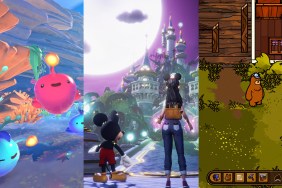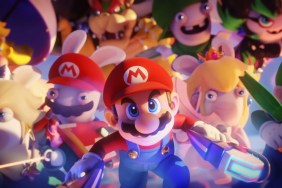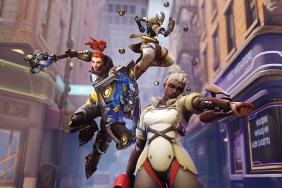Bermuda's got nothing on her.
A little girl, haunted by Phantoms. A world afraid of her. When you're around twelve and everyone thinks you're possessed (because you can't keep your own secret), what do you have to do? If you're Marona, then you gather together a big team of ghoulies and start laying waste for whoever will hire you. She's pretty naive, so it doesn't even have to be the right price. She's just that damn friendly.
[image1]Phantom Brave: The Hermuda Triangle centers around the pint-sized warrior Marona as she takes on jobs from anyone who will offer. Saving endangered species? Helping clear a plot for a world-dominating conglomerate to build a new headquarters? Help a little girl's parents? Doesn't matter. But beyond that, it's fairly bland… there's only enough story to warrant going to a new area for another batch of baddies. Coming from the group that brought the world Disgaea, it's not very surprising.
Speaking of Disgaea, battles are very similar, but with a few notable differences. First, there is no grid, just an open play field. Terrain can be a major factor, with some areas being either bouncy or slippery, which can make each fight all the more frustrating; just when you think you're fighting a battle, you're also playing a jumpy version of curling just to get your character to the baddie, let alone attack.
That's not even the most frustrating thing; with the exception of Marona herself (who actually summons characters to battle), every single character that comes to fight is only around for a limited number of turns. Yup, they just disappear after their number is up, whether or not they've been knocked around or not. It might be good for beefing up super-new characters that should avoid high-level enemies, but for everyone else it can become increasingly irritating.
[image2]Also, the only way to bring out new characters is to "confine" them to inanimate objects, like rocks, trees, and even left-behind weapons, on the play field. Each item that can be used carries traits that carry onto the character being summoned; a rock will increase physical stats like attack and defense, while a tree will increase intelligence and resistance to magic attacks. There usually is enough on the board for a full party to be summoned, but in some cases, enemies will destroy items before they turn their attention to any summoned phantoms. There isn't even a chance in certain cases to reach status-boosting items for confining, which can strike a player like a middle finger before the battle gets truly underway.
Instead of Disgaea's item world to power up weapons, PH has a fella by the name of DungeonMonk. As if to create other characters to help out in the battles, you have to create the DungeonMonk in order to create a new dungeon and earn a new title. Different titles power up different items in different ways, so exploring each titles' respective dungeons and working to unlock their power is not only a great way to level up items (especially the newly created) but also to beef up characters. With how fast the difficulty can ramp up in the main game, it's a good way to work up to some tough, tough battles, and a fun challenge to test a team with. Plus, it's limited to a number of levels, making clear just how far is left to go and how to prepare for the journey. Without the inventory of in-battle items, this was well put together, and they're no less difficult for the masochists among us (one dungeon I saw available to unlock had enemy characters much higher leveled than my own, with a dungeon that went down 96 stages!).
But while that can be fun and offer a lot of replay value, the rest of the experience feels much more limited. One notable example is in the equipment, which is limited to weaponry and items that can be used to summon more phantoms. No more HP recovery items, no armor, no power-ups – just weapons. And if someone is holding an item, they won't be able to lift and throw enemies until their hands are empty… meaning, no weapon. It really limits the options available in a battle.
[image3]Also, the types of characters that can be created is limited to many of the monsters fought in the game and a handful of fighting and mage options, which brings down team customization possibilities. There's still plenty to choose from, but if you've played this type of game from NIS in the past, it feels restrained, more focused on straight-forward combat.
If you finish or grow tired of the initial story, there's also the addition of "Another Marona", a continuation of the main game that takes place after the first story's events. It's a sort of expert mode, minus tutorials, and starts you back at level one to take on the ultimate enemy in the story: Sulfur. This can be truly a godsend for those who enjoy the combat and keep PH on your screen for weeks after you thought you were finished.
If anything, this strikes me as a beginner's Disgaea: easy to get in and start with, and strong replay value. But if you've played NIS's bread-and-butter franchise before, you're not likely to find any reason to pick this up; unless, of course, you're looking for more of the same, slightly simplified, with new cute characters and a brand new “storyline”. Sure, it's fun, but partway through, I had Disgaea 2 back in my PSP to remind myself that I've played this before.
-
Deep replay value
-
Battles are thought-provoking
-
Story is hardly thought-out
-
Way too much like <b>Disgaea</b>










